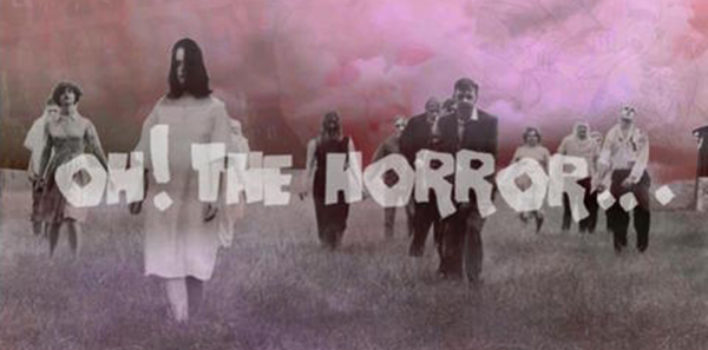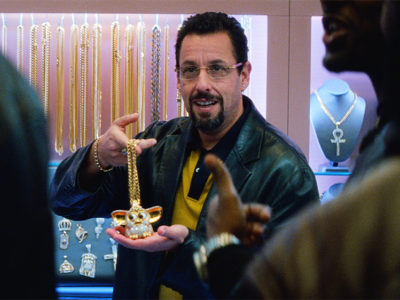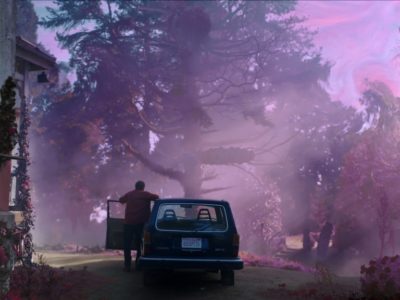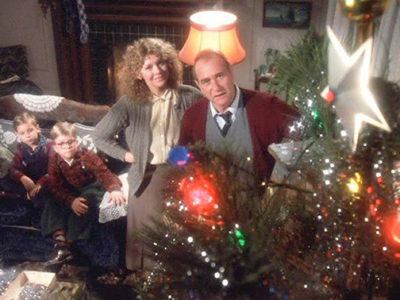Oh! The Horror… of ‘Darling (2015)’
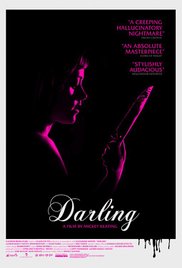 If Roman Polanski’s Repulsion (1965) succumbed to heavier edits and bought into a Dario Argento-esque aesthetic of blood and gore, the product might look like something akin to Mickey Keating’s 2015 independent feature, Darling. Keating unashamedly wears his Repulsion influence on his sleeves: the film is in black and white and the obsession with dead men in bathtubs continues unabated.
If Roman Polanski’s Repulsion (1965) succumbed to heavier edits and bought into a Dario Argento-esque aesthetic of blood and gore, the product might look like something akin to Mickey Keating’s 2015 independent feature, Darling. Keating unashamedly wears his Repulsion influence on his sleeves: the film is in black and white and the obsession with dead men in bathtubs continues unabated.
Like its predecessor, Darling focuses on a young woman, Darling (played by the terrific Lauren Ashley Carter) who is charged with taking care of an older New York City residence that already has a haunted past. As Darling resides, alone, in the house over a period of days, we find her starting to receive visions of a disturbing nature. What follows, then, is the diary of a young woman going mad, similar to Carol in Repulsion.
However, making films that are stylistically reminiscent of those considered to be great works of master directors of the horror genre can be a varied blessing. Darling currently has a mixed to average response from critics—it sits on Rotten Tomatoes and Metacritic at 68% and 60, respectively. The most galled critic it appears was Jacob Knight, reviewer for Birth. Movies. Death., who wrote the following ½ star review on Letterboxd:
New Rule: if a young filmmaker wants to make a Polanski or Lynch riff, they should be required to submit a 2000 word minimum essay explaining that they understand what makes those movies work. Abysmal.
While I understand some of the potential reasons and emotions that might lead to such a scathing critique, I find myself on the other side of this line. I think Mickey Keating understood what made Repulsion work as a riveting piece of psychological horror but favors the pace of a rampaging wildfire to that of a slow, searing burn. Let me put it this way: Darling might have been Repulsion if it had been made in the wake of the horror renaissance of the late 70s-early 80s.
I am not making the case for Darling being the better film for I think Repulsion has stood the test of time better than Darling probably will. What I am making a case for is Keating’s unique vision and how it should not be chained to Polanski comparisons simply because of the visual and narrative similarities.
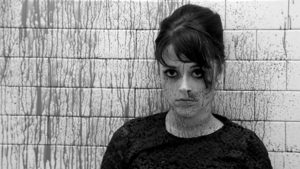 Is Darling re-living past sexual trauma, like Carol in Repulsion? Is she possessed and taking on the motivations of her possessor? Or is she descending into madness and her untrustworthy mind creates a narrative that justifies her violent actions? All of these are potential driving forces for Darling. Keating is not at all interested in parsing out the answer to these questions and, as the film grows increasingly more violent and hallucinatory, it is this ambiguity of motives that, strangely, anchors the film. If Keating had played more towards one explanation over another, the film might have found itself flying off the handle in its last couple of acts.
Is Darling re-living past sexual trauma, like Carol in Repulsion? Is she possessed and taking on the motivations of her possessor? Or is she descending into madness and her untrustworthy mind creates a narrative that justifies her violent actions? All of these are potential driving forces for Darling. Keating is not at all interested in parsing out the answer to these questions and, as the film grows increasingly more violent and hallucinatory, it is this ambiguity of motives that, strangely, anchors the film. If Keating had played more towards one explanation over another, the film might have found itself flying off the handle in its last couple of acts.
However, what is most profound in the film is its insistence on the relentless circularity of evil. When Darling arrives at the house, its owner explains that the last caretaker had taken her life by jumping off of the balcony. By the end of the film, Darling’s madness (or possession or trauma) has reached a fevered climax and she jumps from what we assume is the same balcony. As she expressed to the owner on the phone directly before, her desire was “to become one of your house’s ghost stories.” The final scene of the film shows Madame interviewing a new, young caretaker who we can only assume will travel down the same dark passages that Darling and the caretaker before her went down.
This circularity does not just end with the repetitive fate of the caretakers of the house. It also carries forward into a theme that Darling also riffs on from Repulsion: the psychological effects of sexual abuse and rape in the mind of Darling. Even if in the narrative of the film this perceived trauma is not true, her possession by some other “ghost” or even psychosis is a type of intrusion by an “other” without consent. The trauma plays over and over in her head creating the space in which the central moment of violence plays out and is justified. The knife penetrates the man’s body over and over again in an overtly sexual manner.
What ends up happening within the scope of seventy-eight minutes is the development of concentric circles of evil and violence that feed and build upon the circle before, moving from violent physical acts to internal psychological trauma to suicide out further from individual evil to its systemic effects. All of these circles relentlessly cycling out into the next level, never being broken because our natural inclination is to return evil with evil. This is where I find Darling may actually allow for a more complex interpretative framework than Polanski’s touchstone even if its critics find the formal elements to be somewhat derivative.
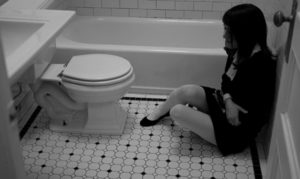 A Christian hermeneutic could speak into this narrative by affirming the truthfulness of what it has to say about evil—that it feeds, builds and systematizes in a vicious cycle—and then it could assess the problem: what breaks the cycle? That answer, however, is not reached in the runtime of the film but that never was his intent. Instead Keating seeks to be descriptive in how he showcases the complexities of brokenness. The descriptive elements are lovingly made with stylistic choices that have their basis in the films that influenced Keating.
A Christian hermeneutic could speak into this narrative by affirming the truthfulness of what it has to say about evil—that it feeds, builds and systematizes in a vicious cycle—and then it could assess the problem: what breaks the cycle? That answer, however, is not reached in the runtime of the film but that never was his intent. Instead Keating seeks to be descriptive in how he showcases the complexities of brokenness. The descriptive elements are lovingly made with stylistic choices that have their basis in the films that influenced Keating.
Darling, unfortunately, will probably straddle the critical line from here on out. I am hoping that at some point it receives some sort of cult status because Keating clearly has a cinematic eye and he is making some bold moves by utilizing similar styles and themes to Polanski, while overcoming, in my opinion, mere pastiche. Within the scope of a mainstream trend in horror of heavy reliance on quick edits and jump scares, it is nice to see a director that can find a way to bring stewing, atmospheric deliberateness and descriptive interpretative texts into a culture that tends to value instant gratification and gloss when it comes to its horror fare.
*Darling is currently available to stream on Netflix. If you want to avoid spoilers, I would recommend watching it before reading this.


